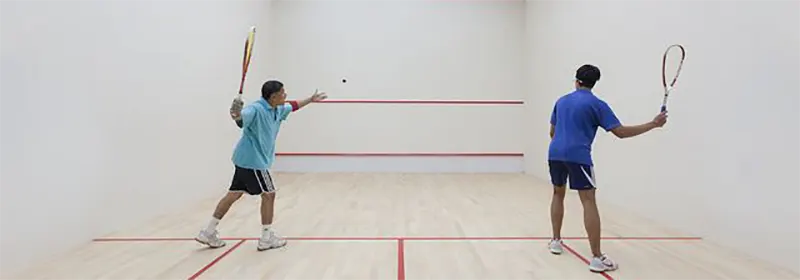15 August 2022 / 3-Min Read / Translate
Plenty of new players are lucky enough to start playing squash by joining an introductory course or even by playing with a friend. Those people don’t have to worry about the choice of ball to use because that decision has been made by somebody with experience. new players who start with groups and in clubs are helped. But what about the many people who, for example see the Commonwealth squash on TV and decide to give it a go?
I believe that squash, and by squash I mean the governing bodies and manufacturers, make selecting the correct ball difficult for new players. Imagine you are new to a sport. You see that squash has 4 types of ball available. Firstly, the colour of the dots make no sense – that’s nobody’s fault, but it doesn’t help. Secondly, you look at the box and see the words “Fast”, “Medium”, “Slow” and “Super Slow”. Which, as a beginner with NO knowledge of squash, would you choose? Come on, be honest! We would choose the “Super Slow”, wouldn’t we? In any other sport, using a fast ball would be considered for experts, right?

Hello and welcome to squash. Squash is one quite easy to learn, great fun to play and wonderful for your fitness and health. Choosing the correct ball is very important. Squash balls come in different speeds, but really they are different bounciness. As a beginner/new player you want a bouncy ball from the beginning.
The simple answer is to use a red dot if you have normal hand-to-eye co-ordination. The red dot ball is bouncy enough for most situations and unless the court is really cold or you find it difficult to hit, it’s the perfect ball for beginners and new players. If you want to, try the blue dot, but in 40 years of coaching and playing,, only a handful of times have peopled needed the blue dot. Once you get better, you can try a yellow dot and if it’s too difficult to get bouncy then stay with the red dot for a little longer.
All squash balls get bouncier as they get hotter. Newer players can’t hit the ball hard enough and consistently enough to get a yellow (slow) or double yellow (super slow) hot enough for it to get bouncy. Don’t worry though, over time you will almost certainly be able to – just keep practicing and have coaching if you can.
One option is to label the balls differently. We could label them by using the levels they are designed for: Beginners, Improvers, Club and Advanced. Yes, I know that’s not perfect, but honestly, it’s much better than what we have now!
It’s true that on very cold courts advanced players might use a single yellow or even a red dot, but the better you get the less that’s important. Unless the court is outside in Siberia, I am pretty sure that good club players would be able to get a double yellow up to temperature and as along as they don’t take too long between points, it should be fine. Disagree with me? tell me why in the comments.
The colours don’t really help anyway. In many ways, the slowest ball should be blue (cold) and the fastest ball red (hot). Or if the colour represent the temperature that they should be used in then red (fast) would be for cold courts and blue for hot courts (super slow). I’m confusing myself, just trying to imagine which colours to use.
Using “Bouncy” as a designator might be better anyway. We would need to make it clear that all balls bet bouncier as they get hotter. Perhaps something like “High Bounce” (blue/fast), “Medium Bounce” (red/medium), “Low Bounce” (yellow/slow) and “Very Low Bounce” (double yellow/super slow). Some might say that this is a solution looking for a problem, but those people haven’t spent time in sports centres where squash players have little to no contact with other squash players.
Personally I would commission a designer to create simple logos for each ball that would signify its type. I know that’s easy to say, but I really feel the colours and simple dots provide no help for new players. It’s so easy for those of us involved in squash for so long to throw phrases around like “Yeah, it was so cold, we had to use a single yellow“. To a new player that might as well be “Yeah, it was so cold, we had to use rainbow squiggle“.
I understand that designing an image that is understandable to new players won’t be easy and anything that makes manufacturing a ball more expensive or complicated with be strongly resisted by manufacturers, but something should be done.
Just like promoting the use of squash goggle, I will continue to post articles about using the right ball. Perhaps they will be found by new players searching the web for advice and if I can help a few people, it’s worth it. Who knows, perhaps somebody with influence and power within the squash world will take notice and open the debate to more people and something will eventually change.
Problems: Squash has bigger problems than the type of balls, not least the closure of many courts, but it’s all part of the same issue: Making squash as easy and as fun to play as possible.
Phillip Marlowe
I spent quite a lot of time writing and creating an in-depth guide. It contains strategies for encouraging the use of the right abll as well as some test to see if you are using the right ball. Read it here: Use The Right Ball